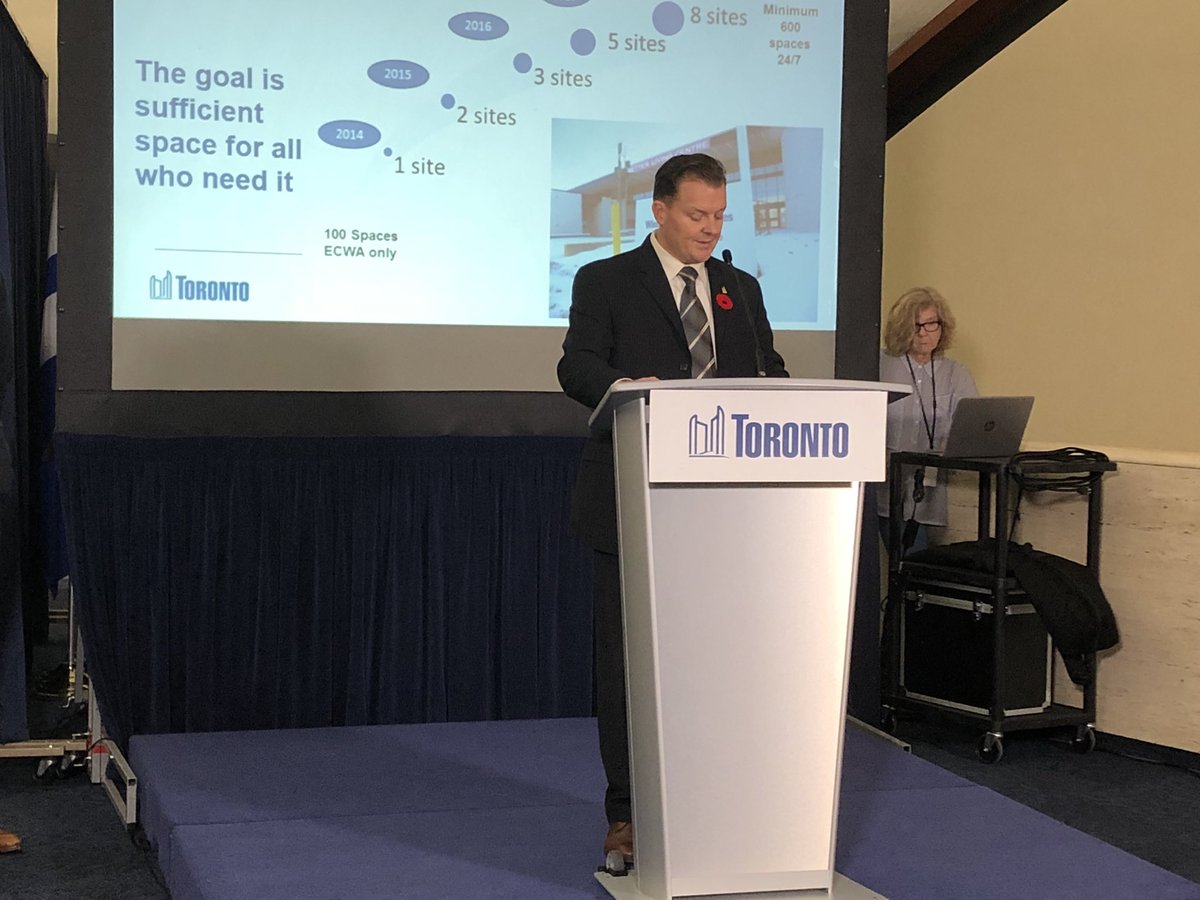The city of Toronto says it has taken additional steps to shelter the city’s most vulnerable residents this winter after high demand and frigid weather put a significant strain on the system last year.

The city is opening three new, prefabricated 24-hour respite sites during the winter. One is located in the Liberty Village area in the parking lot of Lamport Stadium, another is on Fleet Street near Fort York and the third is on Lake Shore Boulevard East near Cherry Street.
The first site, at 1155 King St. W., is scheduled to open on Dec. 15, with the others opening on Jan. 31.
In the meantime, the city said, a temporary 24-hour respite site with up to 200 spaces will open at Exhibition Place next week.
As of Nov. 15, there will be 600 winter respite spaces available, with a contingency plan to add additional capacity if required.
Paul Raftis, general manager of the city’s Shelter, Support and Housing Administration division, said at a press conference on Friday that this year’s plan is based on the lessons from last winter and recommendations from the city’s ombudsman.
“Last year’s long stretch of extremely cold weather, coupled with rising demand for shelter, changed our team’s approach to planning for this winter, he said.
“We focused on providing additional shelter beds, additional 24-hour respites spaces, higher quality service and higher quality standards in respite spaces.”
There were 31 extreme cold weather alert days during the previous winter season, and the city added additional emergency shelter capacity, including temporarily opening up the Moss Park Armoury.
Ombudsman Susan Opler found in March that the city’s intake call centre and 311 staff relied on outdated information about locations and capacity of respite sites, and gave callers inaccurate information at least twice.
This year, the city said steps have been taken to improve communication, including adding additional staff to manage intake calls.
“There’s no question that there were operational and communication challenges within the shelter system,” Raftis said.
There are about 7,000 beds in the shelter system in Toronto, and the number of people accessing city services is increasing.
Last month, there was an average of 6,694 people staying in emergency shelters per night, compared with an average of 5,270 the previous year, and 4,164 in 2016.







Comments